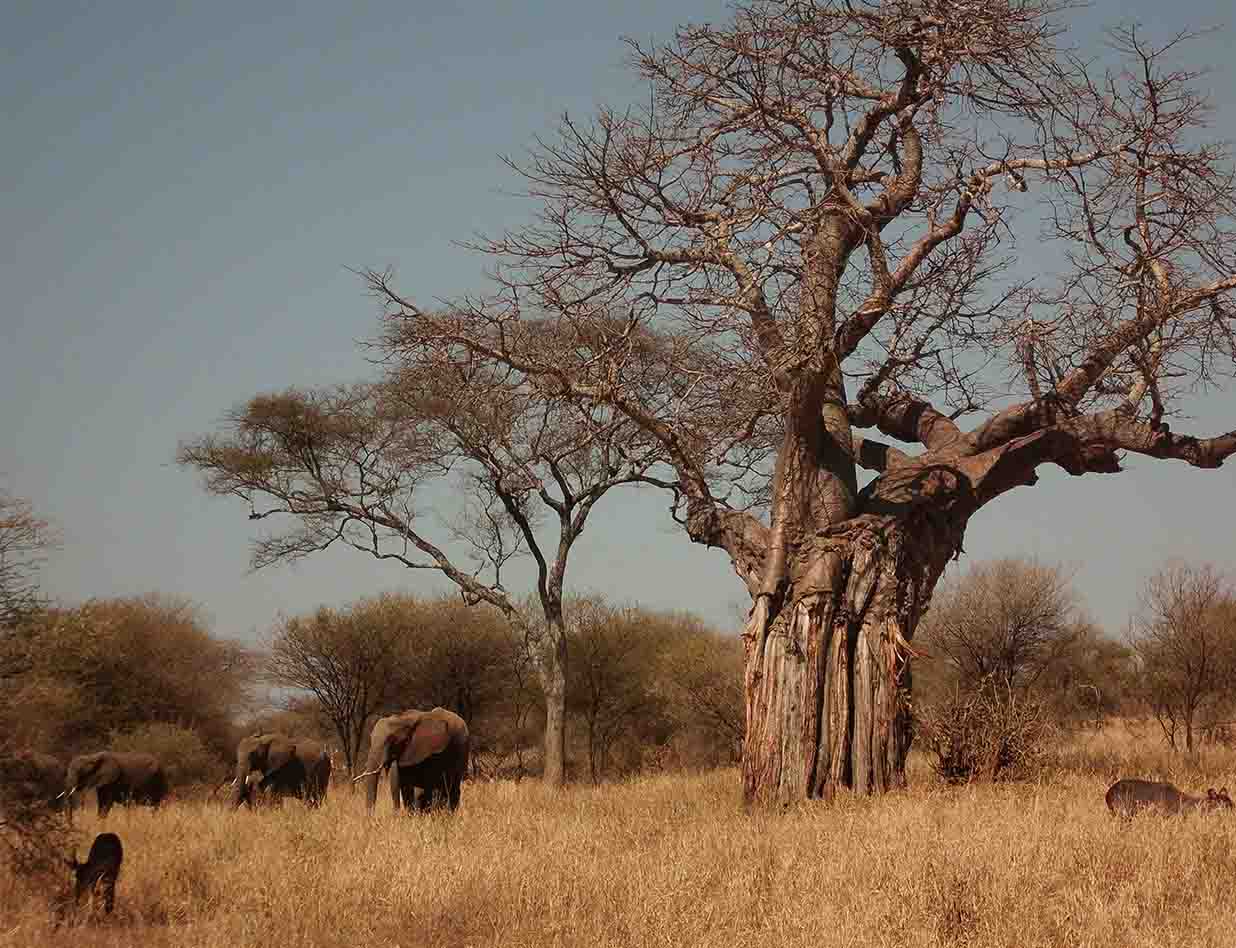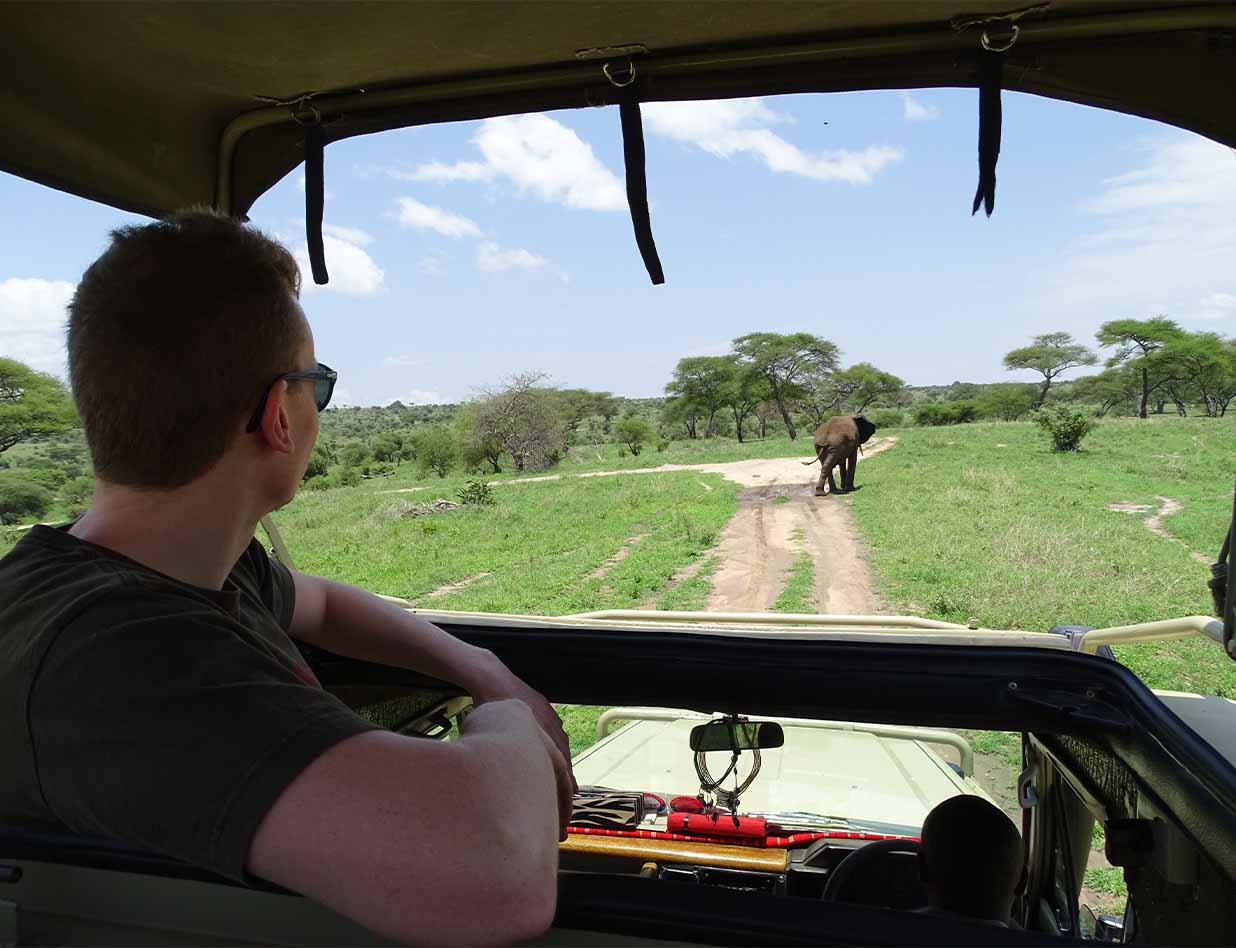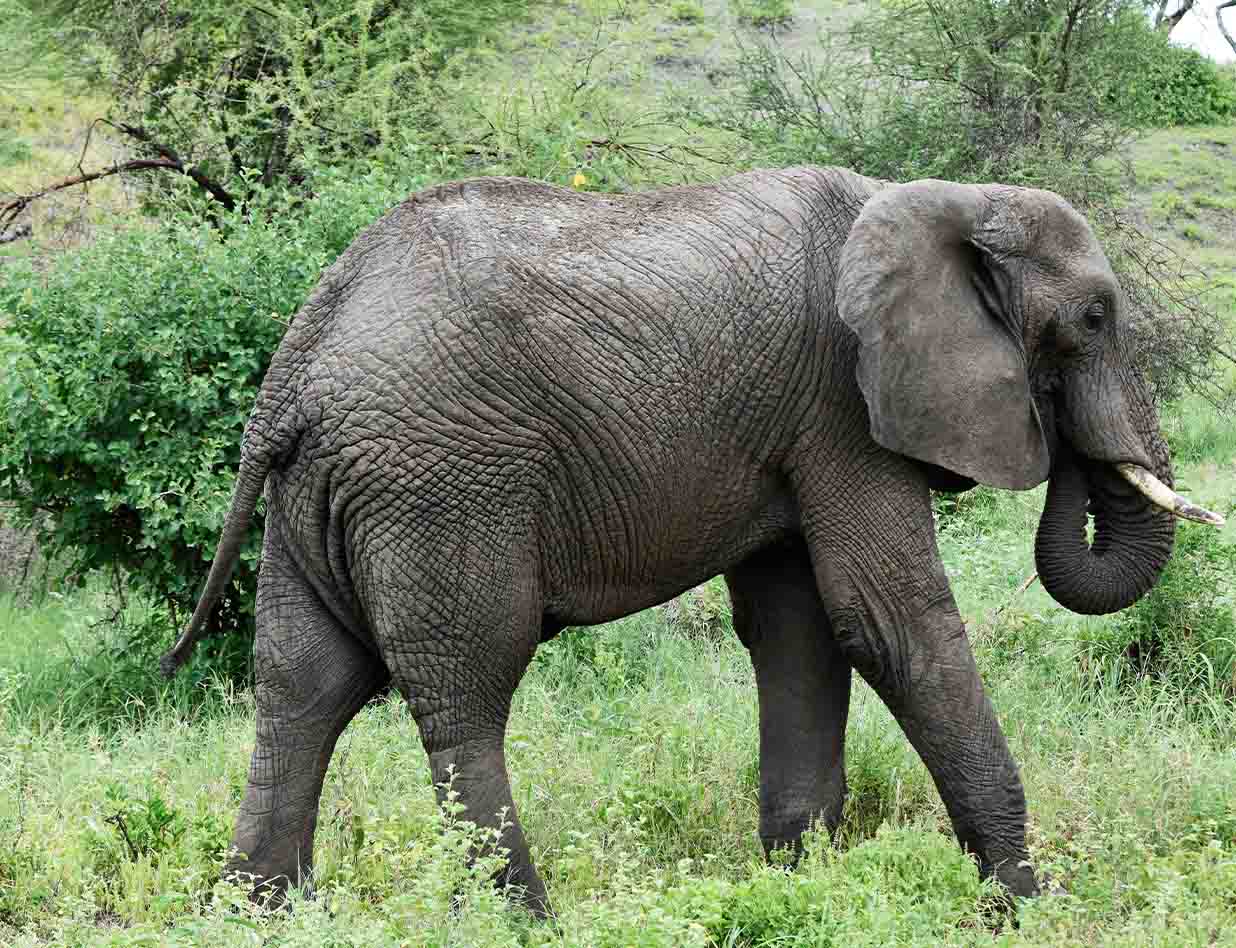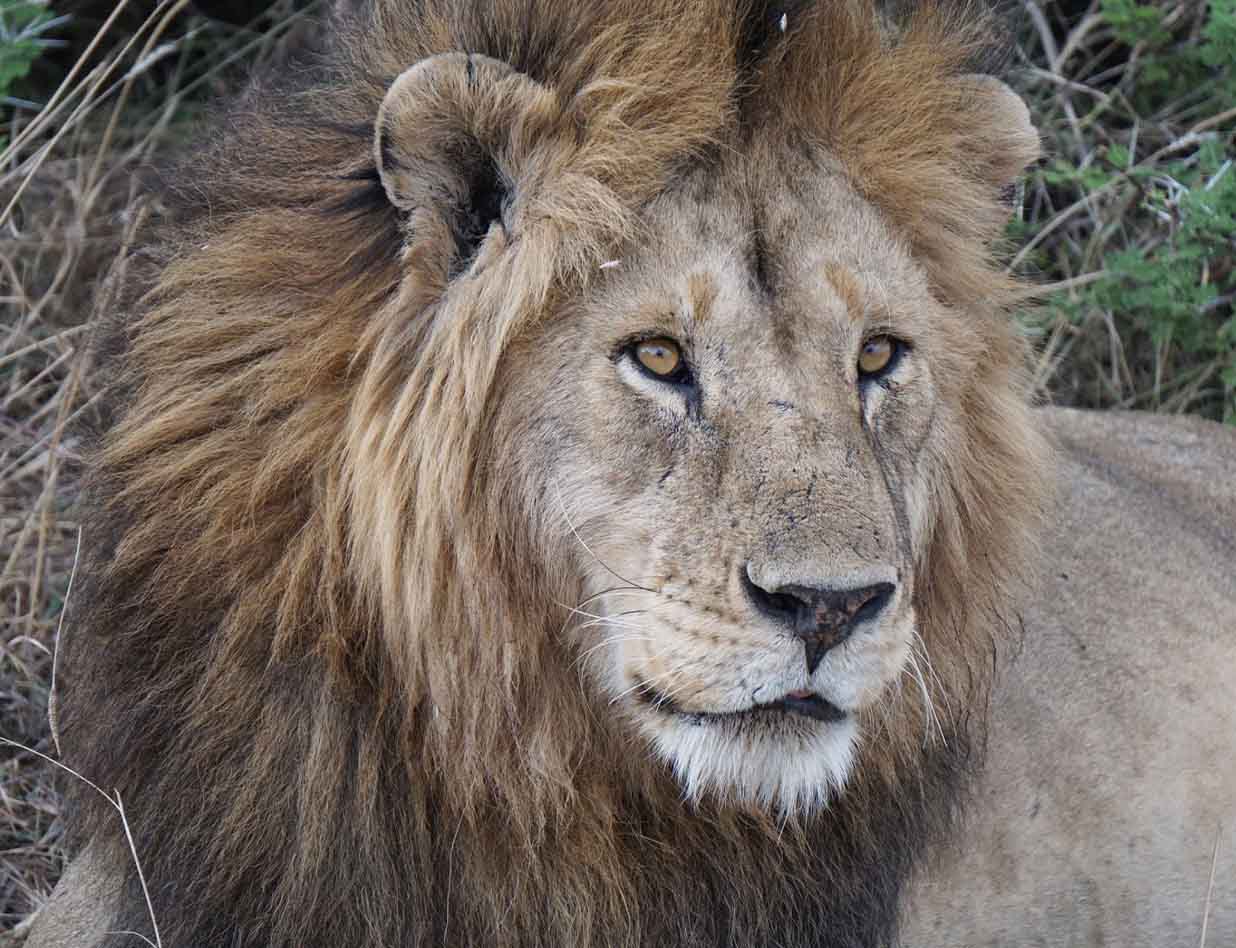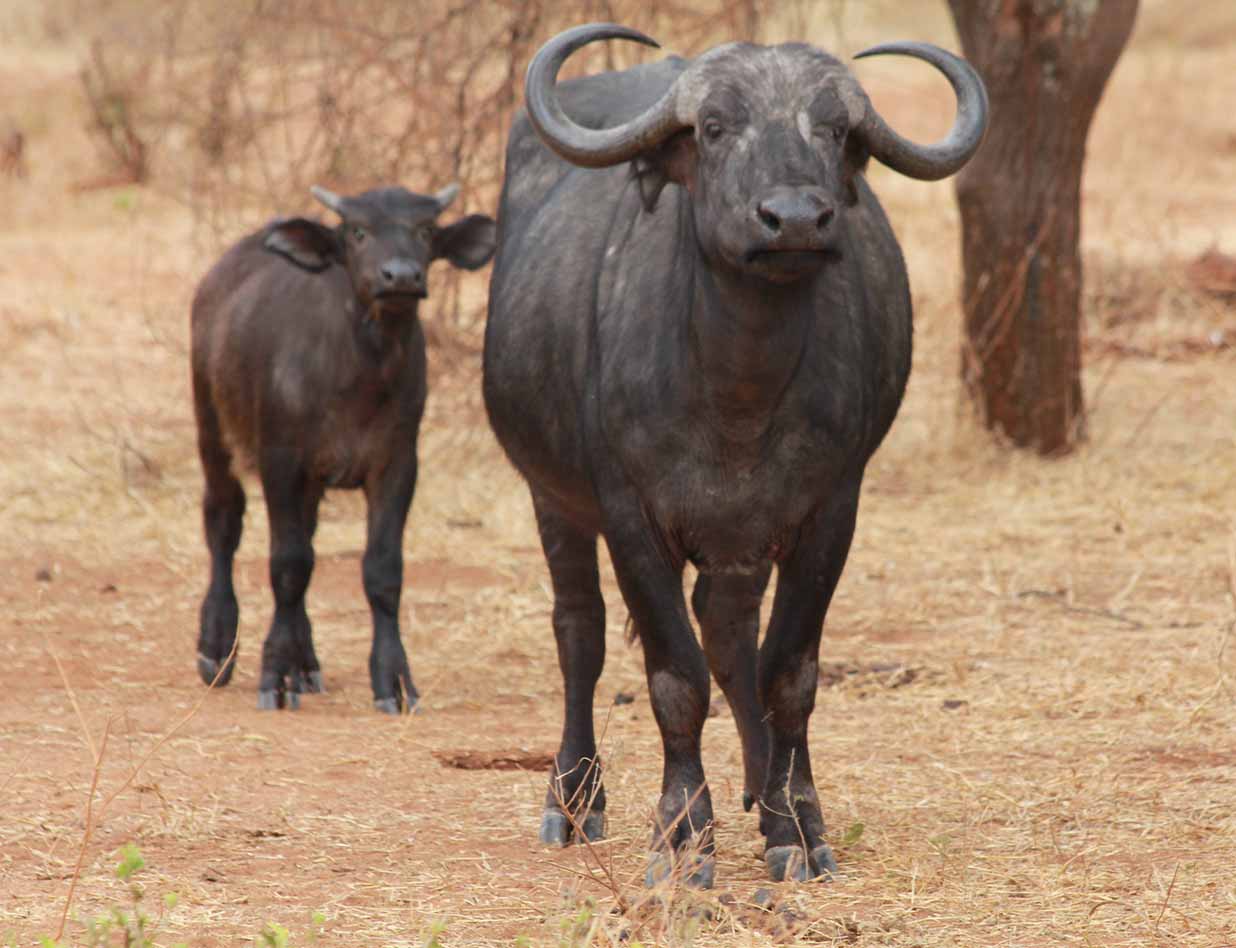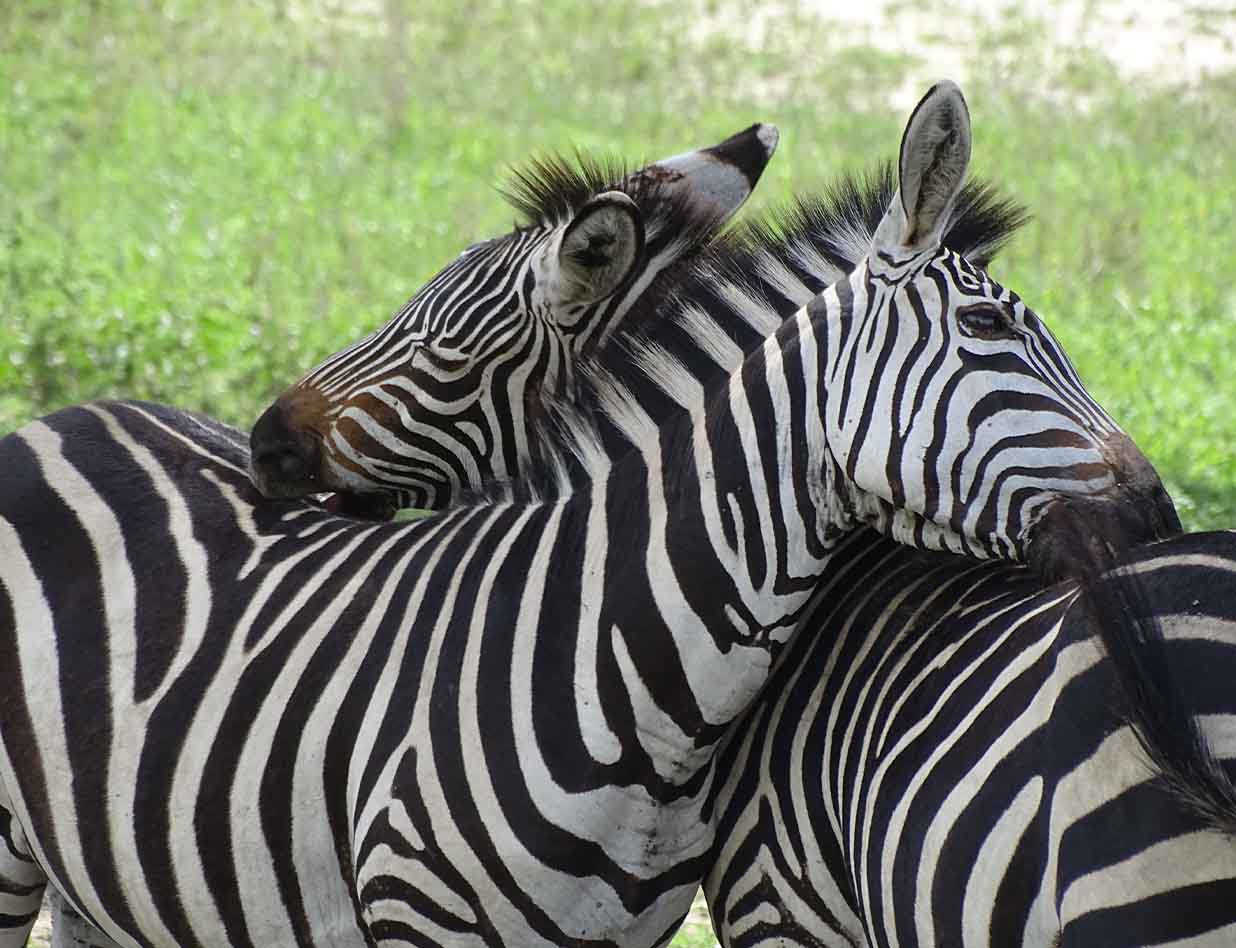TARANGIRE
Haven of elephants
Established in 1970, Tarangire National Park contains the largest concentration of animals in the country after the Serengeti.
The Tarangire River, from which it takes its name, never dries up completely and attracts large numbers of animals.
The river is supplied by the rainshowers from Arusha region. From Januar to May, the rains can be so intense that the river overflows, blocking certain roads inside the park. At the end of the dry season, in September, the river is practically dry and only a few waterholes remain.
- Activities:
- Hot-air ballooning
- Safari in 4x4
- Size:
2600 km²
- Location:
The park is located south-west of Arusha, 120 km away, about 2 hours by road
- Access:
To enter the park by car, there are several gates. It is also possible to use the Kuro airstrip in the park via bush plane.
- Hours:
The park is open from 6am to 6pm
The park permit is valid for 24 hours.
- Main fauna:
- Elephants : 4000
- Big cats
- Giraffes
- Bubales
- Elands

ALLY
DRIVER-GUIDE
Ally is our longest-serving guide at Corto Safaris, and one of our ambassadors in the wilderness! Originally from Kilimanjaro, from the Pare tribe, he is an animal lover and more particularly a leopard lover, so much so that he has tattooed one on his arm. He's a very cultured person, and you'll enjoy talking to him.
The African Elephant
Tarangire Park is one of my favourite parks. All those elephants with the baobabs in the background is always a wonderful sight. In the dry season, it's really easier to see the animals, which are concentrated around the waterholes and the river. When the waterholes are more numerous and scattered throughout the park, that's when we can show you all our tracking experience!
Avoid wearing black and blue clothing in this parks, as these colours attract insects.
The African elephant is one of the largest land mammals. On average, it measures 3.5 metres at the withers and 7 metres in length. A male elephant weighs around 7 tonnes, while a female weighs 4 tonnes. They can live up to 60 years.
Elephants are organised in a matriarchal society. Groups are made up of females and their young. The oldest female is generally responsible for guiding the herd. Adult males live outside the clan.
They are exclusively herbivorous and can eat around 160 kg of food in the dry season and 250 kg in the wet season. This consists mainly of grass, stems, seeds, fruit and branches. They need 80 litres of water a day.
Unfortunately, elephants are in danger. Some experts estimate that an African elephant is killed every 15 minutes, and the species is threatened with extinction.
Its population is estimated at less than 400,000 individuals in 2014, 30% less than in 2007. At the beginning of the 20th century, the population was estimated at over 3 million.
The main threat to the elephant is poaching, for its ivory tusks and meat, but also the destruction of its habitat.
In Tanzania, the fight against poaching has been underway since 2016. Several major networks have been dismantled.
Elephant populations have started to increase again in the country.
Today, there are around 4,000 elephants in Tarangire National Park, and you're sure to see them in large numbers! It's hard to believe that they are so endangered. Tourism is helping to save them, and the revenue it brings in is encouraging the government to further protect them and their habitat.
We love:
- The Big Elephants herds
- The scenery of the Tarangire River
- The baobabs

